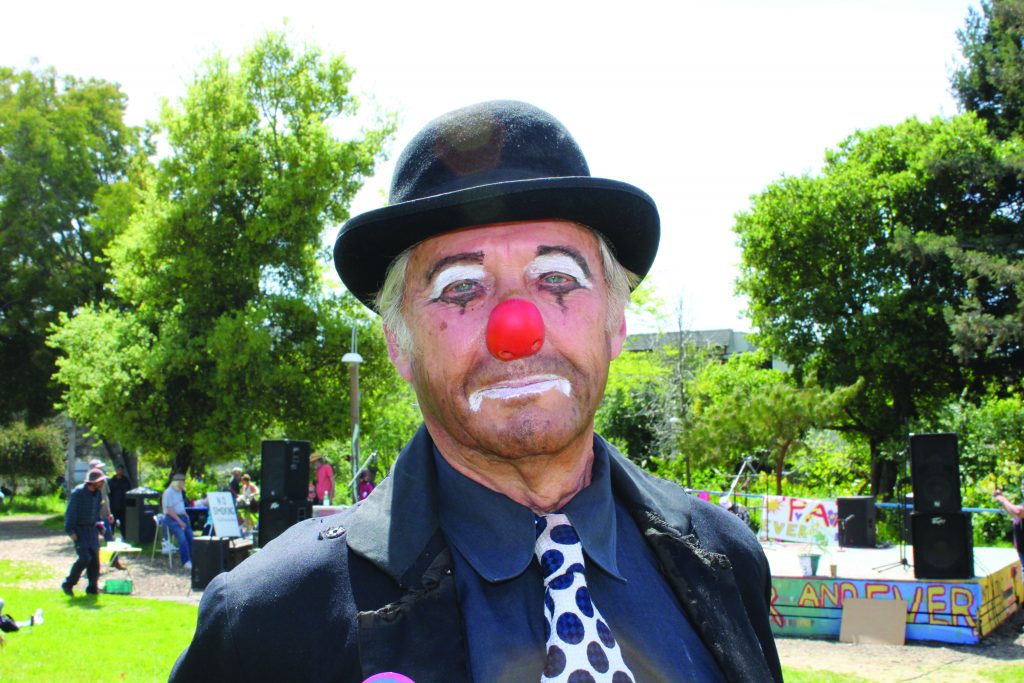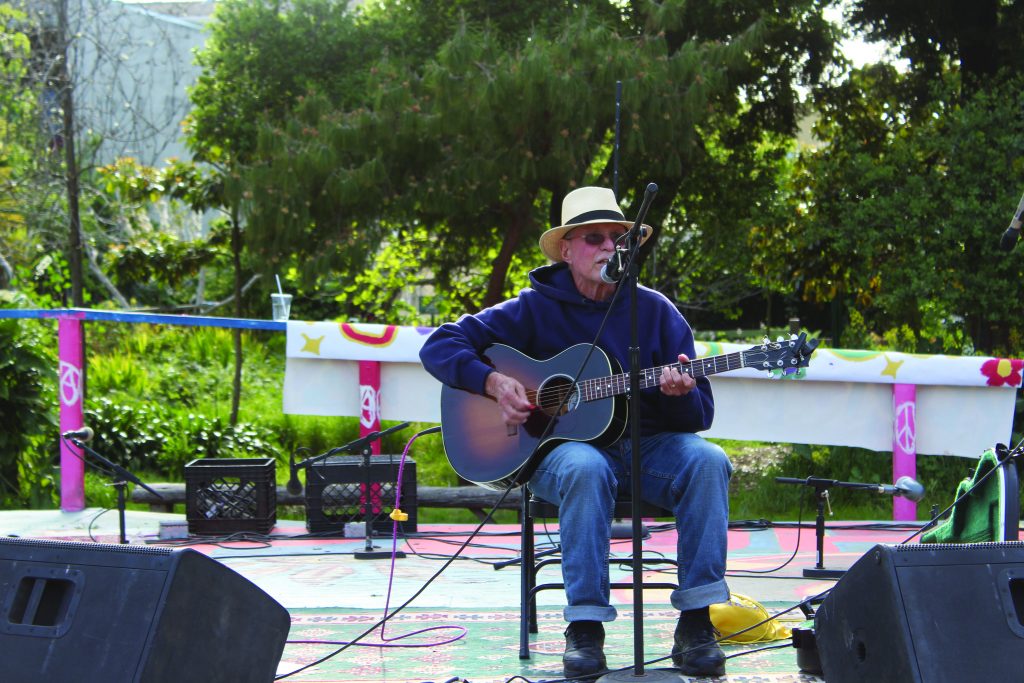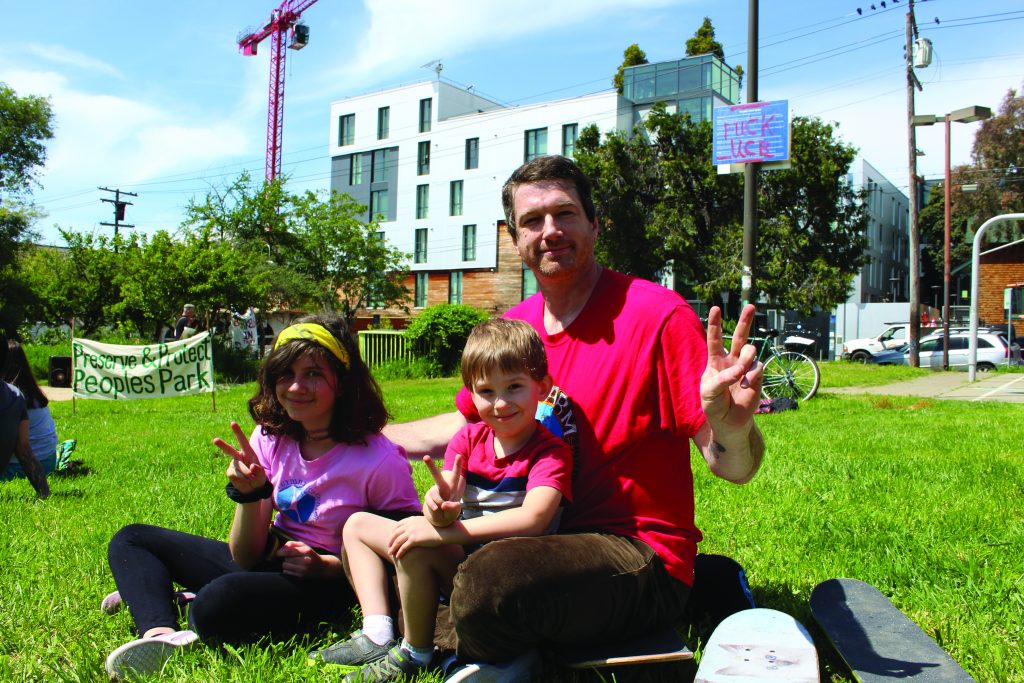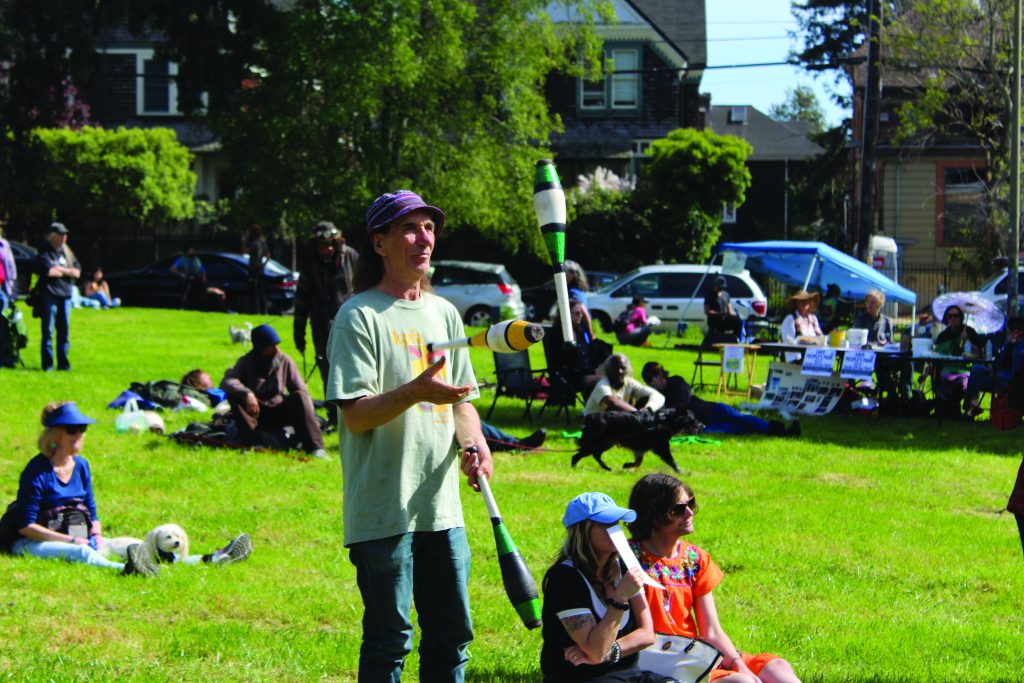

“The first time I played here, there was no park here yet,” Stevie Barsotti, the frontman of a band called Dapper Shindig, said to a crowd who had gathered in People’s Park on April 13. “The third time was when we tore down the fence, and that was really fun!”
Barsotti’s band was just one of the 14 groups and speakers that gathered on the 13th to celebrate the Park’s 50th anniversary. The event was organized by the People’s Park Committee, which originally formed in 1969 to protect, defend, and save the Park. It was a sunny Saturday, and some 200 people spent the day listening to music, catching up with old friends, and reminiscing about growing the Park out of a muddy parking lot—and then spend- ing the following five decades defending it.

The master of ceremonies was Lefty the Clown— otherwise known as Ed Monroe, an artist and defender of the Park who founded the Telegraph Avenue Street Fair. Carol Denney performed a satirical impression of UC Berkeley’s chancellor with her band, “Chancellor Carol Quist and the UC Regents.” Country Joe MacDonald—famous for his 1965 protest song, “I Feel Like I’m Fixin’ to Die Rag”—also performed for the crowd.
People’s Park was born of energy of the Civil Rights Movement. The people of Berkeley saw a neglected muddy lot, so they jumped into action
to turn it into something beautiful. But as the Park celebrates 50 years, it is also under attack: Just last year, UC Berkeley announced plans to turn it into student housing—just like they planned to do in the 1960’s, before it was taken by the people. This impending threat added an urgency to the Park’s 50th anniversary, as guests faced the possibility that this could be its last.

With music in the air, people shared stories about the Park’s history. Barsotti’s account of tearing down the fence was just one of the stories being told: how on May 8, 1972, a group of people protesting the Vietnam War used bull-cutters to tear down the fence that had been built around the Park.
Victor Owens, a member of Dapper Shindig and a Berkeley High graduate, shared an earlier memory, from 1969. Owens remembers cutting school as a ninth grader to lay bricks in the Park, while the people around him were laying down sod. “It was an amazing expression of community consciousness, a thought in action. An amazing combination of freedom and making a difference mixed in with an element of out of control,” he said.
Once the Park was built, it became a center of community life.

“I was homeless in San Francisco from about the ages of 14 to 16,” said Jason Boggs. “When I was trying to figure out how things worked around me, People’s Park fit right in. I used to use the free box, and wash up in the restroom. I was being taught by older guys about peaceful protest.”
Boggs drove down from Auburn with his two young children to attend the celebration. “I’m trying to keep them exposed, and grounded in where I grew up. You have to understand people or else it’s just ‘us versus them’.”

The event was attended both by people who helped build the Park—such as Michael Delacour, Wendy Schlesinger, Liane Chiu, and Chris Kholer—and by those who currently seek refuge there. Berkeley City Council Member Cheryl Davila also joined the celebration.
One notable absence, however, was UC Berkeley students.
“What’s missing here is about 1,500 students,” said Stacey Hill, who has frequented the Park since the beginning. “Back in the 70s, they were here. They were tightly organized. Those became powerful people.”
Some students stumbled upon the celebration while walking down Haste Street and came to check it out. Berkeley sophomore Anita Iyer was one of them.
“I might come back if there are more events like this, but it de- pends on what’s going on in the area,” she said.
Others showed up to learn more about the park’s legacy. “I got an email about it and was curious. It seemed fun” said another UC Berkeley student named Gilly. “I think students view the Park as a place where homeless people live and don’t know the history. There’s a lack of understanding.”
The April 13 event was not the end of the 50th anniversary celebration. The People’s Park Committee held another musical gathering on April 28. And in the weeks between, they planned a series of educational events—in part to bridge the gap in understanding that has surfaced over the last five decades. These events covered topics such as women in the movement, political songwriting, and gardening in the Park.


Primarily, though, the educational events were meant to echo the spirit of information sharing that helped define the early days of the Park. “It used to be more about education, events were more political, more educational, not necessarily just concerts,” said Lisa Teague, a member of the People’s Park Committee. “We wanted to mirror those things.”
Teague believes that this is the element of the Park’s history that brings the most hope for the future. “We want to make the park more of a hub for other struggles,” she said, citing the Committee’s recent work with other local activist organizations, such as Berke- ley Friend’s on Wheels, the Oakland Fund Against Displacement, and the Bay Area Landless People’s Alliance.
“We want to reflect on its activist history and make it also a force for change in Berkeley. Plus, that brings more folks. More creative minds coming to the Park—that’s what’s going to save us.”
Alastair Boone is the Director of Street Spirit.
